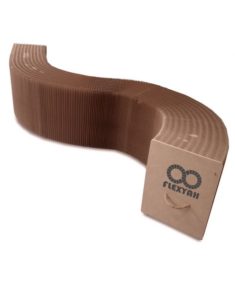Many Functions, Shrinking Sizes, Clever Marketing
Watch the 3-minute video at the top of Expand Furniture’s Smart Space-Saving Ideas page. Don’t multitask; you need to see people going through the few seconds of converting a piece of furniture from one use to another, or storing it in tiny spaces when it’s not needed.
This entire product line is an excellent example of the principle of one part, many functions (which I discuss in Guerrilla Marketing to Heal the World, BTW). If you want to create a green business, one of the planet-saving tricks is to build for multiple uses. It’s also an example of miniaturization; when not needed, these chairs, tables, sofas, and storage units take up almost no space.
Think of the all-in-one printer/scanner/fax as one example that’s gone mass-market. A smartphone is an even better example because it’s far more universal AND and embraces miniaturization.
When I was a kid growing up in the 1960s and 1970s, portable communication existed in concept and showed up in comics, science fiction, etc. (Maxwell Smart’s shoe phone, Dick Tracy’s walkie-talkie). And so did the idea of all-powerful computers that contained the world’s knowledge.
But combining those two concepts into one device that fits in a pocket—WOW! I don’t think I came across anything that even hinted at this until the Apple Newtown and Palm Pilot PDAs in the 1990s, and I don’t think either of those had Internet access.
Now, think about the video. Most of the furniture ideas are not really a new concept. William Murphy received his first patent for a “disappearing bed” in 1912 (and the concept predated him); modular sectional sofas and tables with self-contained expansion leaves have been on the market for decades.
The one really new product is that miraculous looking couch that seemed to pull out of a twisted piece of foam. It’s actually paper, and you can get a better look at it here and in this post’s photo.

Yet this gets only a few seconds in the video. The rest of it is simply doing more with ideas that have been around forever.
Some of the other designs could be called “deep Kaizen.” The Japanese concept of “continuous improvement,” Kaizen got very popular in the US business world a few decades back. So yes, we’ve had Murphy beds forever—but have you ever seen a Murphy bunk bed before? An ottoman that holds a set of five padded folding chairs? A coffee table that can transform in under a minute into a full-size dining room table?
And this brings up another principle: repurposing. Ask yourself what do you already make or sell that could be used differently? I ask my consulting clients this question regularly, and it opens up many conversations about new markets and new ways of marketing to them. Expand has identified several target markets: condo dwellers and people living in Tiny Houses, among them. But some of the marketing photos and videos deploy the pieces in massive, spacious living rooms, too. The company understands that a photo like that changes the way people think about their products and make it attractive to a whole different sector.
How will you take these insights into your own business?
